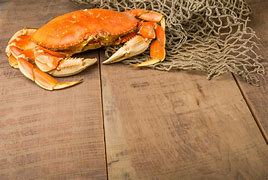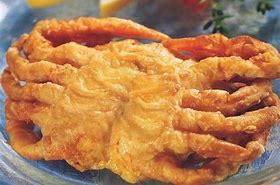Soft shell crabs are actually “hard shell crabs” that are going through the molting process. Unlike humans, whose skin grows and stretches to accommodate growth, a crabs’ shell is external and must therefore be shed and replaced or “molted” as the crab grows. To initiate the molting process, the crab releases enzymes which separate its old shell from the underlying skin. Over the course of several weeks, the crab then grows a new, soft, paper-like shell under the old shell. The crab then ingests enough water to bloat itself, loosening the old shell. A king crab may molt 20 times in its lifetime, molting yearly in adulthood (young crabs molt more frequently). In addition to their shells, soft shell crabs can also replace their legs (ie. in case of injury or the loss of a leg), in as few as three molt cycles. There’s some confusion on how to spell it – they’re not soft-shell crabs or softshell crabs, just soft shell crabs. Easy!
Soft shell crabs have a rich, buttery sweetness and tender, flaky meat. The body meat is white, the claw meat brown, and shells orange-red. Since soft shell crabs are eaten shell and all, the shell adds a crunchy texture. Soft shell crabs are perfect for boiling, broiling, frying, grilling, sauteing, or steaming.


